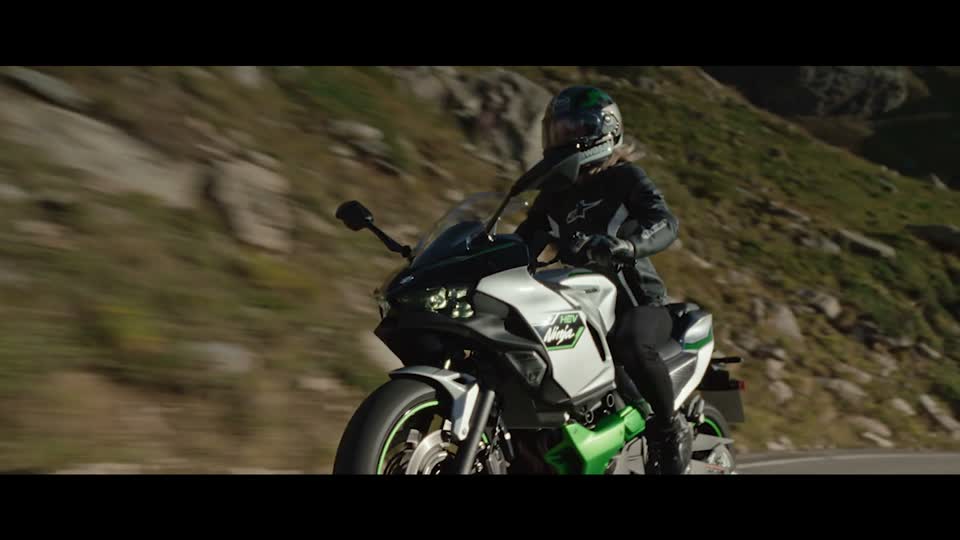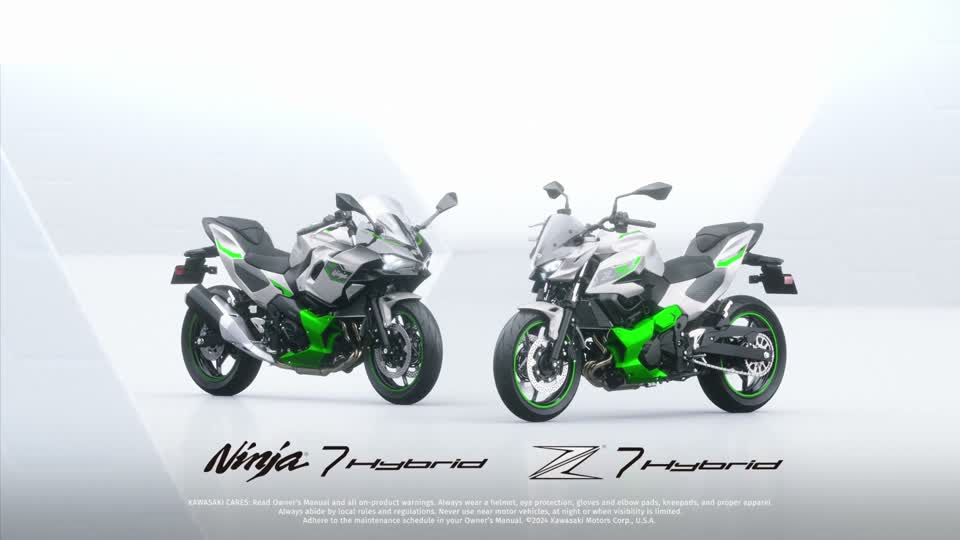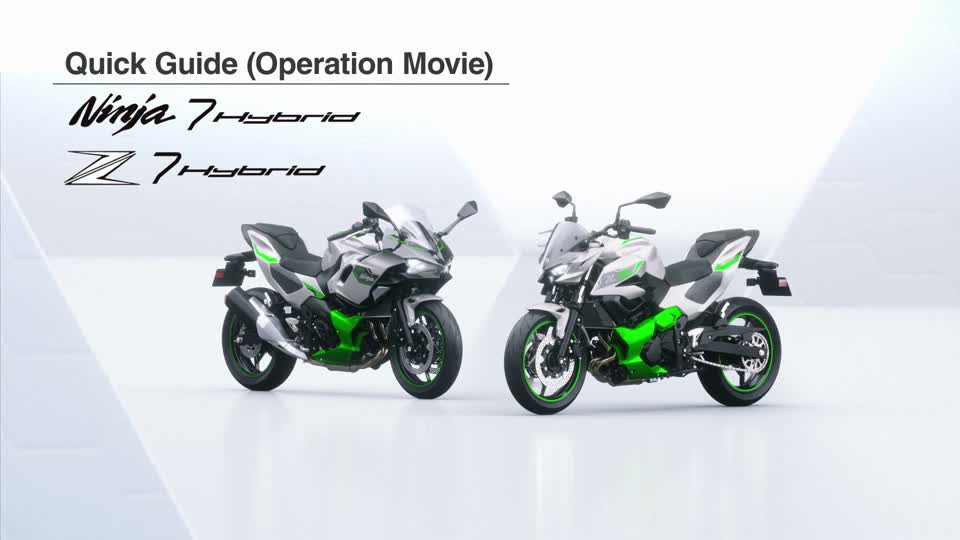main content of page
Equipment illustrated and specification may vary to meet individual markets.
NINJA® 7 HYBRID ABS
DUAL-POWERED HYBRID SPORTBIKE
Equipment illustrated and specification may vary to meet individual markets.
MODEL SPECS |
HYBRID
POWER
E-BOOST
Click on a technology to learn more.
| Engine Management Technology |
| Chassis Management Technology |
| Engine | 4-stroke, Parallel Twin, DOHC, liquid-cooled |
| Displacement | 451cc |
| Bore x Stroke | 70.0 x 58.6mm |
| Compression Ratio | 11.7:1 |
| Maximum System Torque | 44.2 lb-ft @ 2,800 rpm |
| Fuel System | EFI with dual 36mm throttle bodies |
| Ignition | TCBI |
| Traction Motor | Liquid-cooled, interior permanent magnet synchronous motor |
| Power Modes | 3 Modes (SPORT-HYBRID/ ECO-HYBRID/EV) plus e-boost |
| Motor Drive Battery Type | 48 V lithium-ion battery |
| Transmission | 6-speed Automated Manual |
| Shifter Mechanism | Push button |
| Final Drive Ratio | 3.071 (14/43) |
| Final Drive | Chain |
| Electronic Rider Aids | Automatic Launch Position Finder (ALPF) in MT, WALK Mode (with Reverse), Anti-lock Brake System (ABS) |
| Frame Type | Trellis, high-tensile steel |
| Front Suspension/Wheel Travel | 41mm telescopic fork/4.7 in |
| Rear Suspension/Wheel Travel | Bottom-Link Uni-Trak® with single gas-charged shock, adjustable spring preload/4.5 in |
| Front Tire | 120/70-17 |
| Rear Tire | 160/60-17 |
| Front Brakes | Dual 300mm discs with 2-piston calipers and ABS |
| Rear Brakes | Single 220mm disc with single-piston caliper and ABS |
| Rake & Trail | 25°/4.1 in |
| Overall Length | 84.4 in |
| Overall Width | 29.5 in |
| Overall Height | 44.7 in |
| Ground Clearance | 5.1 in |
| Seat Height | 31.3 in |
| Curb Weight | 502.7 lb* (incl. battery) |
| Fuel Capacity | 3.7 gal |
| Wheelbase | 60.4 in |
| Special Features | e-boost, Idling Stop Function, Regenerative System, TFT Color Instrumentation with Smartphone Connectivity via RIDEOLOGY THE APP |
| Color Choices | Metallic Bright Silver/Metallic Matte Lime Green/Ebony |
| Warranty | 12 Month Limited Warranty |
*Curb weight includes all necessary materials, fluids, and batteries to operate correctly, full tank of fuel (more than 90 percent capacity) and tool kit (if supplied).
GALLERY |
Equipment illustrated and specification may vary to meet individual markets.
SELECT A DISTRIBUTOR TO FIND A KAWASAKI
DEALER IN YOUR AREA
Locate a Dealer
DEALER IN YOUR AREA
SIMILAR MODELS |
SPORT
NINJA® e-1
NINJA® 500
NINJA® 650
NINJA® 1100SX





































